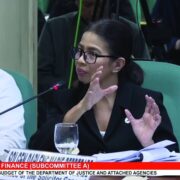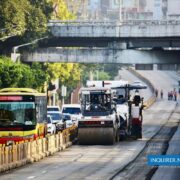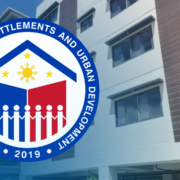Opening doors to the Filipino home

Homeownership continues to stand as one of the most deeply held aspirations among Filipino families. It is not merely a financial goal, but a lifelong dream that represents security, legacy, and stability.
Today, that dream is becoming more attainable as the Philippine housing sector stands on the brink of transformation, driven by strong government commitment, expanded infrastructure, improved access to financing and the private sector’s growing focus on affordable housing.

Addressing housing needs
At the recently held celebration of the National Shelter Month, President Ferdinand Marcos Jr. reaffirmed the government’s commitment to address the country’s housing needs, highlighting that more than 57,000 Pag-IBIG Fund members have been assisted this year in owning new homes or rehabilitating their existing ones.
This aligns with the goals of the Expanded Pambansang Pabahay Para sa Pilipino (4PH) Program, launched in September 2022, which aims to construct one million housing units annually until 2028 to close the country’s 6.5 million-unit housing backlog.
In August, Pag-IBIG also rolled out a landmark initiative to make homeownership even more accessible. Through its “super sale” of acquired assets, the agency is offering over 30,000 foreclosed properties at significantly reduced prices.
The sale, which runs until December 14 this year, provides up to 40 percent discount on occupied units and 35 percent on unoccupied units, allowing many to legitimize ownership at a much lower cost.

Private sector initiatives
Beyond government-led programs, the private sector is also driving change.
Real estate developers that once focused on luxury and mid-income markets have begun building large-scale residential communities outside Metro Manila. These projects provide not only homes but also amenities like open spaces, parks, and pools, while ensuring proximity to schools, workplaces, public markets, and shopping centers. These likewise promote balanced and sustainable living.
What’s making this shift possible is improved connectivity. Living beyond the metro is now a viable option, thanks to the country’s expanding infrastructure network.
With new expressways, bridges, rail systems, and transport hubs, the dream of homeownership is no longer confined to Metro Manila—paving the way for new residential and economic hubs in Central Luzon, Calabarzon, and parts of the Visayas and Mindanao.
As a result, areas once seen as too remote are transforming. Communities that were once hours away from key employment centers are now evolving into self-sustaining townships, where families can live, work, and study—all within reach.


Financing schemes
It’s also important to note that not all paths to homeownership require paying everything upfront. In fact, the Philippines has a relatively robust set of financing options that help make homeownership more accessible.
Through the Pag-IBIG Fund, for example, members can borrow up to P6 million for housing, with interest rates as low as 5.75 percent (one-year fixed) or 6.375 percent annually (three-year fixed) as of 2025. It also offers repayment terms of up to 30 years, making it a smart choice for many first-time homebuyers with active memberships and stable income.
Banks also offer home loans with interest rates ranging from 6 to 8 percent annually, typically fixed for one to five years. While banks conduct more stringent credit checks and property appraisals, they also offer more flexible payment options for qualified borrowers.
In-house financing from property developers is another alternative. While these often come with higher interest rates of up to 15 percent annually and shorter payment terms, the advantage lies in their more relaxed application requirements.
Sources: Inquirer Research, industry.gov.ph, bria.com.ph, 8990holdings.com

















